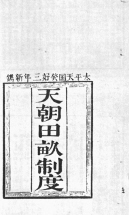So what on earth is respect?
| By Dominic Casciani
BBC News Online community affairs |

"Give respect, Get respect" says the government's action plan - but what on earth does it mean? Can we really define respect?
It has been talked of for months, and now Prime Minister Tony Blair has launched his respect agenda for his administration's third term.
In his introduction to the plan, Mr Blair says: "What lies at the heart of [anti-social] behaviour is a lack of respect for values that almost everyone in this country shares - consideration for others, a recognition that we all have responsibilities as well as rights, civility and good manners."
The challenge is that this is often very difficult to define. Nobody likes yobbish behaviour, littering and so on.
But what about fast food? Many older people think it is the height of bad manners to walk down the street chomping on a kebab - and even worse to fill the bus with the smells of saturated fats.
At the same time, younger people have grown up in a culture of fast food so for some scoffing on the street may be second nature. But is that disrespectful, rude, a generational divide or simply a crime against your digestive system?
 "I'm in the classroom..." |
Mobile phones are another example. Tony Blair was reportedly aghast in a session with head teachers when he discovered that pupils had phones in schools. Some heads were not that bothered - particularly those in rural areas where the phones were a useful tool.
This is the dilemma for government, to draw the line in the sand between what it can justifiably champion as decent right-thinking activity and that which it can say is thoroughly beastly and anti-social.
Do unto others
So how does it set about doing this? The cover of the government action plan is not just a neat piece of graphic design, it is also a philosophical statement.
 The cycle of respect |
The logo of two arrows circling each other very consciously borrows from recycling. What goes around, comes around, do unto others as you would have others do unto you.
Here Jean-Jacques Rousseau and his "social contract" comes in. The 18th century French philosopher argued that people should give up their natural rights to do whatever they jolly well please so that society can function.
That idea (also similarly devised by Plato, Hobbes and other great thinkers) is a key element of the modern state. So when Tony Blair talks about respect, or of "rights and responsibilities", he is talking about our contract with each other - and with government.
But if this balanced contract has indeed gone wrong, what happened?
 |  Children are encouraged to think that they are the equals of their parents, their teachers and people in authority Children are encouraged to think that they are the equals of their parents, their teachers and people in authority  |
Philosopher Roger Scruton says that the reason why respect has disappeared is because it is no longer taught.
Insolence goes unpunished in the young, and what starts in the playground is translated into adulthood.
However, Richard Sennett, one of Britain's leading sociologists, argues the contrary: We should ask whether institutions treat individuals with respect, particularly those who are not powerful.
Shape up
The prime minister isn't being choosy about his definition as both of these arguments in some shape or form make it into his package, along with a third idea: that government has a responsibility to intervene on behalf of society if it believes individuals are failing in their personal duties.
In other words, if a local family from hell break the social contract, the authorities will enforce it.
 Hardly respectful? |
This is usually tricky territory for politicians. John Major's ill-fated Back to Basics drive in 1993 fell down quicker than the trousers of some of his MPs caught by tabloid photographers.
The reason why politicians face a tough time on this wicket is because of an entirely different word: deference.
If government packs people off on parenting classes, is that just helping them get on in life, or a case of: "We know better than you - so just be thankful".
Mr Blair appears confident that he can avoid being accused of demanding deference, saying: "It is not in my gift or anyone in central government to guarantee good behaviour or to impose a set of common values about acceptable behaviour".
He adds that his respect agenda is "not about returning to the days of 'knowing your place'."
Yet, confusingly, he then says that if people who need help will not take it, "we will make them".
Two-fingered salute
Which brings us back to a question left unanswered by the title of the action plan: If Mr Blair is demanding respect, is he also giving it?
There's an idea among some criminologists and sociologists that if respect isn't a two-way street, you create something they call "asymmetric citizenship".
They warn that unless the young are treated decently, they are likely to react in precisely in the ways society most fears.
This isn't just about manners. Studies have found that benefit cheats often believe they have a de facto right to rip off the state because they believe the state has failed them; they have nothing left to lose so decide to stick two fingers up to society.
The irony is that the very same people have also been found to be socially conservative, expressing shock and outrage when they witness the anti-social behaviour of others.
A case of "do as I say, don't do as I do" - another circular philosophy many associate with politicians.



















